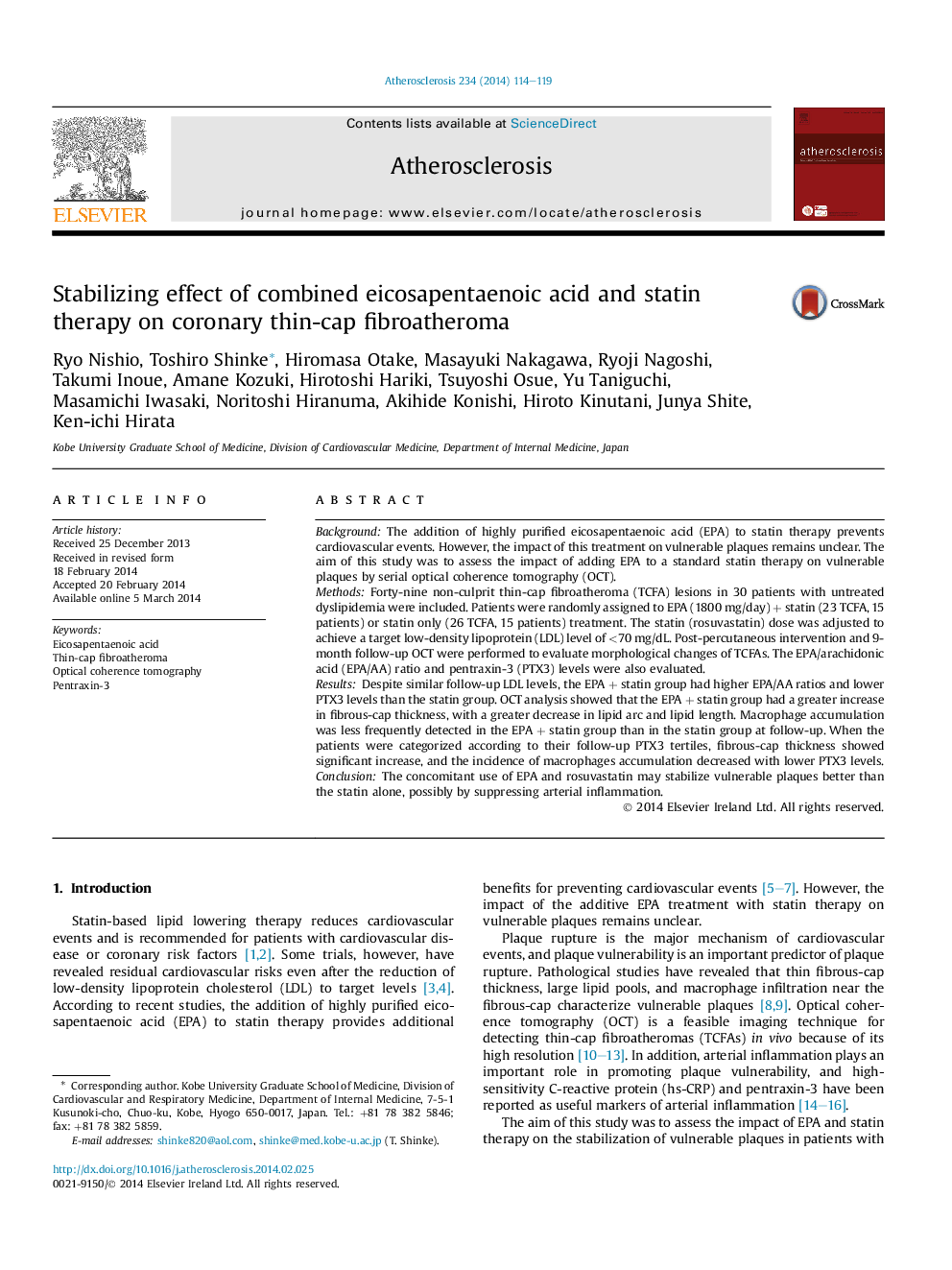| کد مقاله | کد نشریه | سال انتشار | مقاله انگلیسی | نسخه تمام متن |
|---|---|---|---|---|
| 5946493 | 1172359 | 2014 | 6 صفحه PDF | دانلود رایگان |
- We evaluate the impact of adding EPA to statin therapy on vulnerable plaques.
- Pentraxin-3 levels were lower in the combination group than the statin alone.
- The combination group had a greater increase in fibrous-cap thickness.
- The combination group had a greater decrease in lipid arc and lipid length.
- We show that EPAÂ +Â rosuvastatin treatment strongly stabilizes vulnerable plaques.
BackgroundThe addition of highly purified eicosapentaenoic acid (EPA) to statin therapy prevents cardiovascular events. However, the impact of this treatment on vulnerable plaques remains unclear. The aim of this study was to assess the impact of adding EPA to a standard statin therapy on vulnerable plaques by serial optical coherence tomography (OCT).MethodsForty-nine non-culprit thin-cap fibroatheroma (TCFA) lesions in 30 patients with untreated dyslipidemia were included. Patients were randomly assigned to EPA (1800Â mg/day)Â +Â statin (23 TCFA, 15 patients) or statin only (26 TCFA, 15 patients) treatment. The statin (rosuvastatin) dose was adjusted to achieve a target low-density lipoprotein (LDL) level of <70Â mg/dL. Post-percutaneous intervention and 9-month follow-up OCT were performed to evaluate morphological changes of TCFAs. The EPA/arachidonic acid (EPA/AA) ratio and pentraxin-3 (PTX3) levels were also evaluated.ResultsDespite similar follow-up LDL levels, the EPAÂ +Â statin group had higher EPA/AA ratios and lower PTX3 levels than the statin group. OCT analysis showed that the EPAÂ +Â statin group had a greater increase in fibrous-cap thickness, with a greater decrease in lipid arc and lipid length. Macrophage accumulation was less frequently detected in the EPAÂ +Â statin group than in the statin group at follow-up. When the patients were categorized according to their follow-up PTX3 tertiles, fibrous-cap thickness showed significant increase, and the incidence of macrophages accumulation decreased with lower PTX3 levels.ConclusionThe concomitant use of EPA and rosuvastatin may stabilize vulnerable plaques better than the statin alone, possibly by suppressing arterial inflammation.
Journal: Atherosclerosis - Volume 234, Issue 1, May 2014, Pages 114-119
